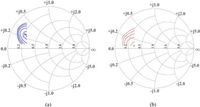In response to the growing demand for energy-efficient power amplifiers suitable for modern telecommunications, researchers have introduced a high-efficiency Class-EF power amplifier (PA) that promises enhanced performance across a wider range of operating frequencies. This innovative design addresses traditional limitations in PA efficiency, offering significant improvements relevant to the ongoing rollout of fifth-generation communication systems.
The team led by E. Sepahvand and A. Sheikhi identified a critical challenge within power amplification: the requirement for optimal impedance matching across multiple harmonic frequencies. The conventional methods struggled to meet these demands efficiently. In their new study, the authors state, "The proposed load networks simultaneously satisfy the impedance requirements at fundamental, second, third, fourth, and fifth harmonics." This holistic approach enables the amplifier to operate more effectively across various signal frequencies, minimizing losses and enhancing overall efficiency.
One key feature of the Class-EF PA is its low normalized switch voltage of 2, which contributes to lower power dissipation during operation. This reduction in heat production is crucial for maintaining performance in high-power applications, where overheating can degrade system reliability. The design incorporates both lumped element and transmission line load networks, which were tested and measured to validate their effectiveness.
Measured results confirmed a broad operational bandwidth from 1.9 to 2.9 GHz, demonstrating a drain efficiency that varies between 70% and 83%. In tests, output power exceeded 39.5 dBm, and power gain was greater than 10 dB. As noted by the authors, "Measured results show a wide bandwidth from 1.9 to 2.9 GHz. Over this frequency range, drain efficiency is between 70-83%, with output power greater than 39.5 dBm and power gain larger than 10 dB." Such performance is particularly relevant as the telecommunications sector shifts towards more complex modulation schemes requiring broadband solutions.
The effectiveness of the proposed PA design becomes more apparent in comparison to older models, where higher energy efficiency often meant sacrificing output power. An impressive adjunct to these findings was the performance at 2.2 GHz, where the PA reached a peak average efficiency (PAE) of 76.3% and output power of 40 dBm, illustrating the strong output that can accompany high efficiency.
Linear performance is another crucial outcome of the research. The adjacent channel power ratio (ACPR)—a measure of signal distortion that can interfere with neighboring channels—was recorded at -39 dBc at 2.5 GHz. This result indicates that the power amplifier demonstrates relatively good linearity performance at the 1 dB compression point, making it suitable for practical communication systems where linearity and efficiency must coexist.
The authors cites the design's ability to control harmonics as a significant factor in achieving these results, saying: "The adjacent channel power ratio (ACPR) is −39 dBc, indicating that the power amplifier demonstrates relatively good linearity performance at the 1 dB gain compression point." The harmonic control method employed also helps shape the current and voltage waveforms in a way that resembles ideal square pulses, thereby reducing overlap between them during transitions, which translates into higher efficiency.
Overall, the work introduces a comprehensive approach to power amplifier design and opens the door for further advancements in high-efficiency amplifiers that integrate robust harmonic control across multiple orders. Future investigations could explore the tuning of parallel LC circuits into transmission-line equivalents, broadening potential applications for these amplifiers. Furthermore, researchers might consider testing advanced materials to enhance performance and investigating environmental factors affecting reliability under varied conditions.
Given the industry's ongoing transformation, the implications of this research are considerable. The introduction of highly efficient broadband power amplifiers is expected to improve energy sustainability in telecommunications, thereby addressing the need for devices that can operate effectively without placing undue stress on energy resources. The study's findings could pave the way for more sustainable telecommunications infrastructures, thus contributing positively towards environmental stewardship.




